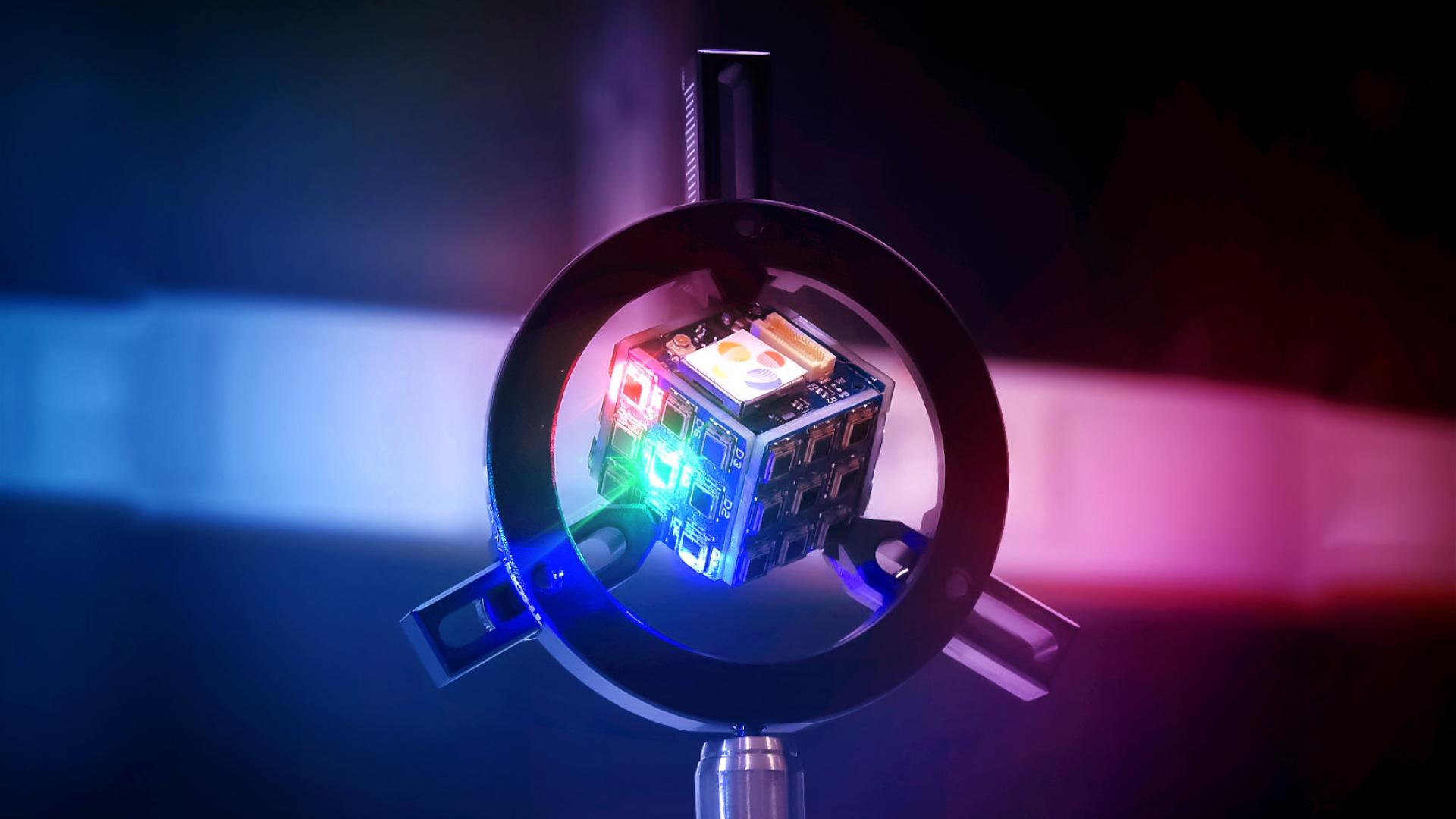An autonomous system that transfers data at high speed while continuously harvesting energy from light is expected to make the Internet of Things (IoT) more efficient and sustainable[1].
The system, developed at KAUST, can help maintain stable data transmission and constant power generation in satellite communication systems, environmental sensors deployed in remote environments, and smart agriculture devices, such as pest detection cameras and automated irrigation systems.
Simultaneous wireless information and power transfer systems harvest energy from ambient radio frequency waves to power IoT devices while transmitting data, which eliminates battery replacements and makes IoT devices easier to implement. These systems, however, face challenges, such as low energy conversion efficiency and complex receiver designs.
Conversely, their optical counterparts offer promising solutions to these issues. In addition to using cheap off-the-shelf components, they leverage the broad lightwave spectrum and rely on solar cells to harvest energy while maintaining data transfer, which is attractive for indoor, outdoor and underwater applications.
Wireless optical communication systems have alignment and efficiency problems that researchers, with limited success, have tackled using time or space-splitting techniques. Time splitting allows a device to switch between energy harvesting and information decoding over time, efficiently using the full capacity of the device. Space splitting uses separate parts of the device to independently collect energy and receive data, which can enhance efficiency and mitigate alignment problems.
A team led by Khaled Salama and including Boon Ooi, Mohamed-Slim Alouini and postdoc Jose Ilton De Oliveira Filho, combined space and time splitting to make the most of both techniques. The researchers developed a multiplexed system comprising a grid of light sensors that can independently work on getting data and capturing energy as well as work together to track light beams in real time.
“Our device achieves fast data speeds and reliable connections while gathering enough energy to power itself,” Filho says.
The researchers also introduced a feature that allows the system to switch between two light sensor modes: single mode and quadrant mode. The system operates in single mode when the goal is to maximize power generation; it involves one sensor for data and the rest for gathering energy. It switches to quadrant mode when fast data transfer is needed, which requires up to four sensors for receiving data.
“Depending on what’s needed more urgently — power or data — the system can adjust its mode of operation. This adaptability makes our system highly versatile, capable of meeting various demands by simply adjusting its settings,” Filho says.
The multiplexed system solves misalignment issues and reaches up to 85.2 Mbps in high-speed mode and 5 Mbps in self-powered mode, exceeding the team’s expectations. This helps set standards for future devices that need to work independently and proves that they can operate autonomously, even in challenging environments like underwater and outer space, Filho says.
The researchers are now miniaturizing their system and enhancing its performance. “Our aim is to develop fully autonomous systems that are both energy-efficient and capable of operating independently in any environment,” Filho says. “This could fundamentally change the way devices interact with their surroundings.”
Reference: Filho, J. I. O., Trichili, A., Alkhazragi, O., Alouini, M.-S., Ooi, B. S. & Salama, K. N. Reconfigurable MIMO-based self-powered battery-less light communication system. Light: Science and Applications 13, 218 (2024). | link
Source: Discovery KAUST

